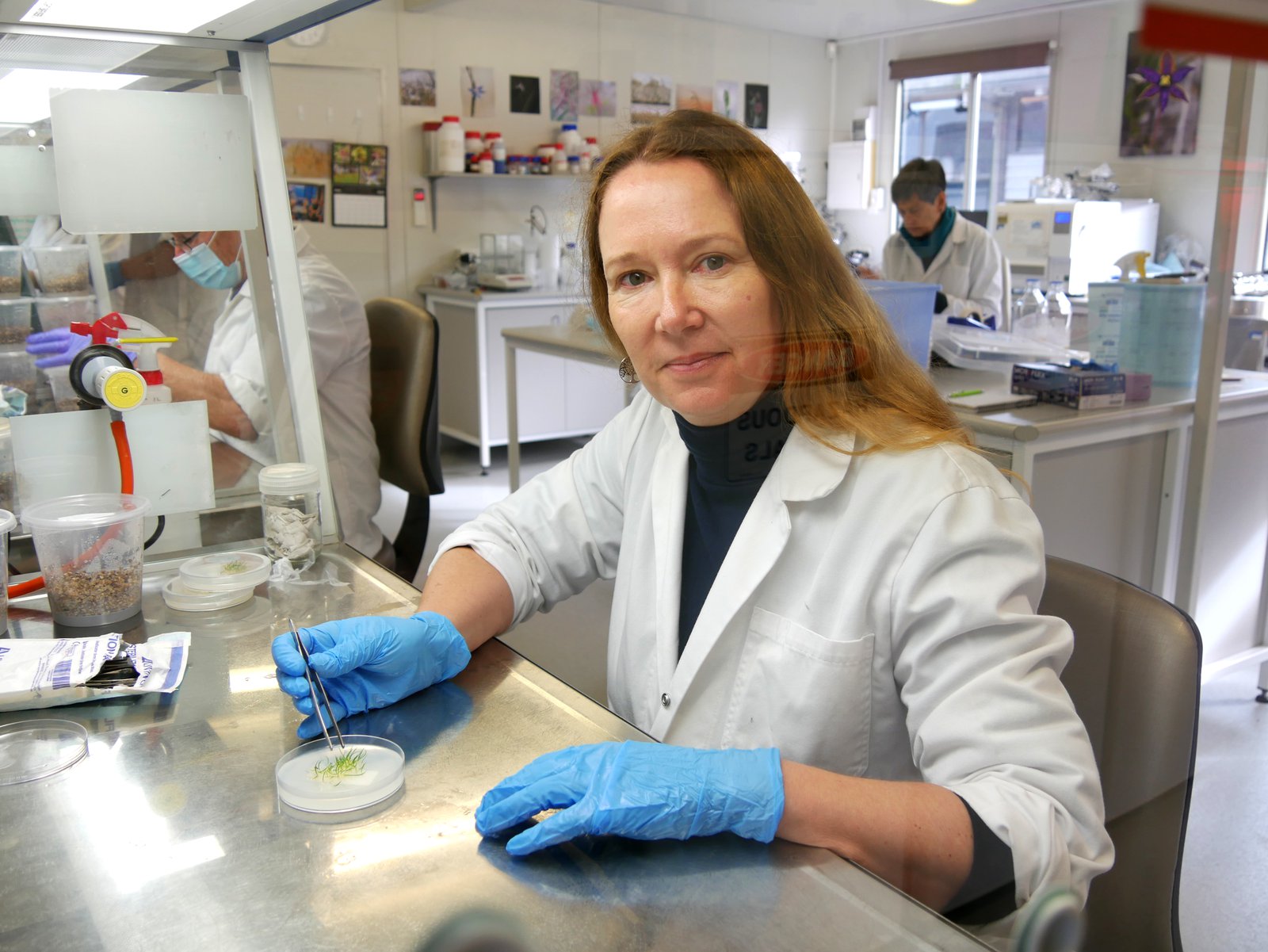Today, and every day, we celebrate women in science
From Professor Veena Sahajwalla and Dr Stephanie Partridge to Dr Emma Camp and Dr Noushka Reiter, the Australian Museum is proud to have recognised the achievements of many exceptional women throughout the Eureka Prizes’ 34-year history. This International Women’s Day, we reflect on some of the most recent recipients, who include trailblazing researchers, an interdisciplinary team and a young filmmaker.

© University of Sydney
Who Dr Stephanie Partridge, University of Sydney
Why Dr Stephanie Partridge harnesses technology and nutrition science to improve youth wellbeing. Putting adolescent experiences at the heart of her research and advocacy, she collaborates with young people to learn how technology can help them live a healthier lifestyle. Her work has informed major public health policies in Australia and globally.
Awarded the 2023 Eureka Prize for Emerging Leader in Science

© UNSW
Who Professor Veena Sahajwalla, UNSW
What Materials scientist and engineer Professor Veena Sahajwalla is the pioneering inventor of a new generation of ‘green’ materials and sustainable products. Through her rigorous research and extensive community and industry engagement, she is shifting the mindset of the nation to see unwanted materials not as waste, but as a valuable resource.
Awarded the 2022 Celestino Eureka Prize for Promoting Understanding of Science

© Australian Museum
Who Dr Tess Reynolds, University of Sydney
What By developing technology to better guide robotic imaging during surgery, Dr Tess Reynolds is improving the view for surgeons as well as outcomes for patients. Partnering with the world’s largest medical device company, her pioneering techniques offer clearer, more complete images for complex cardiac and spinal surgery.
Awarded the 2022 Macquarie University Eureka Prize for Outstanding Early Career Researcher

© Australian Museum
Who Anna P., PLC Sydney, NSW
What In Green Infrastructure: The Solution to Coastal Erosion, Anna uses humour and graphics to explain the phenomenon of coastal erosion and its causes in an accessible and entertaining way. She also highlights how green solutions such as vegetation and natural barriers can be used to protect homes and assets.
Awarded the 2023 University of Sydney Sleek Geeks Science Eureka Prize – Primary

© Patti Virtue
Who Dr Dana M. Bergstrom, Australian Antarctic Division and University of Wollongong
What For decades, Dr Dana M. Bergstrom has championed evidence-based science in biodiversity, biosecurity and the impacts of climate change. Skilled at science translation and distilling complexity, she has led the exploration of ecosystem collapse from Australia’s tropics to Antarctica, delivering innovative options for modern conservation.
Awarded the 2021 Eureka Prize for Leadership in Innovation and Science

© Jennifer Green 2017
Who Lindell Bromham, Felicity Meakins, Xia Hua and Cassandra Algy, Australian National University; University of Queensland; and Karungkarni Art and Culture Aboriginal Corporation
What Bringing together an Indigenous community member, linguist, mathematician and biologist, this team is studying Gurindji, an Indigenous language of northern Australia. Their research is developing new ways to understand the processes of language change and factors that help keep Indigenous languages strong and vibrant.
Awarded the 2021 Eureka Prize for Excellence in Interdisciplinary Scientific Research

© Royal Botanic Gardens Victoria
Who Dr Noushka Reiter, Royal Botanic Gardens Victoria
What Dr Noushka Reiter leads an internationally recognised orchid conservation program, which has bolstered the populations of 14 endangered species by up to 260%. Using innovative methods to study pollinators and symbiotically propagate over 20,000 plants across 80 endangered species, her work safeguards Australia's unique botanical diversity, providing a blueprint for global plant conservation.
Awarded the 2023 Australian Institute of Botanical Science Eureka Prize for Excellence in Botanical Science

© Franck Gazzola/Rolex
Who Dr Emma Camp, University of Technology Sydney
What Dr Emma Camp’s discovery of corals thriving in extreme conditions is informing new adaptive management solutions in both Australia and abroad. Together with government and nature conservation agencies, she is developing improved management strategies for coral reefs worldwide, while using her work as a platform to advocate for action on climate change.
Awarded the 2021 Macquarie University Eureka Prize for Outstanding Early Career Researcher

© Professor Kerrylee Rogers
Who Professor Kerrylee Rogers, School of Earth, Atmospheric and Life Sciences, University of Wollongong
What Professor Kerrylee Rogers is a professor in the School of Earth, Atmospheric and Life Sciences at the University of Wollongong, a passionate advocate for environmental sustainability and the mum of two teenage boys. She’s made a significant contribution to our understanding of how coastal and aquatic ecosystems respond to climate change, work that earned her and her fellow researchers recognised in the 2019 Eureka Prizes.
Awarded the 2019 NSW Environment, Energy and Science (DPIE) Eureka Prize for Environmental Research (co-winner)

© Michelle Blewitt
Who Dr Michelle Blewitt, AUSMAP Program Director, Total Environment Centre
What The Australian Microplastic Assessment Project (AUSMAP) is a world-first, national citizen science program that empowers people of all ages to document microplastic pollution. An immersive experience, participants are educated on the prevalence of microplastics around our waterways and trained to collect scientifically valid data that is used to design effective mitigation strategies for plastic pollution.
Awarded the 2021 Department of Industry, Science, Energy and Resources Eureka Prize for Innovation in Citizen Science (co-winner)
The Australian Museum Eureka Prizes are the country’s most comprehensive national science awards, honouring excellence across the areas of research & innovation, leadership, science engagement, and school science.

